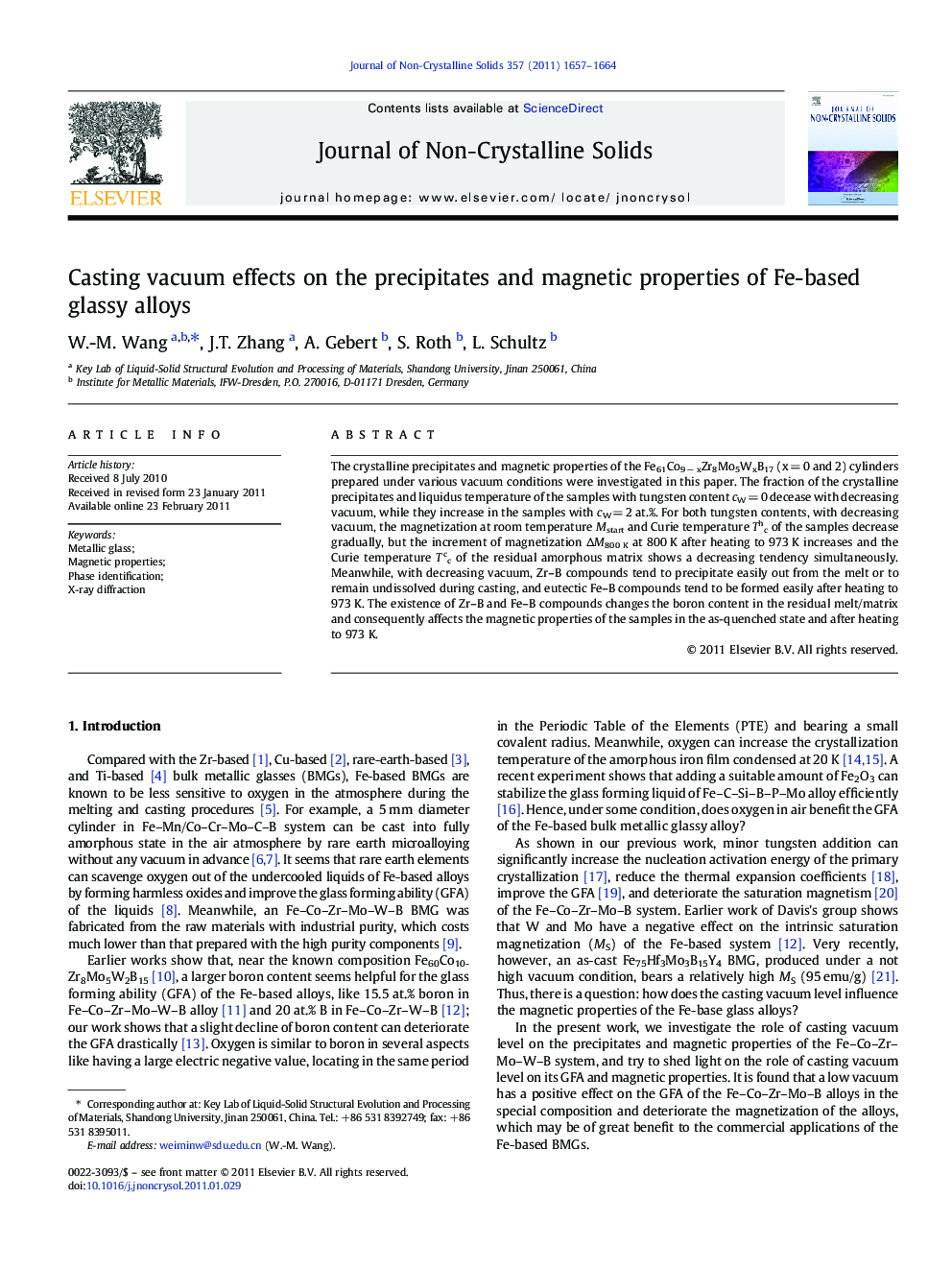| کد مقاله | کد نشریه | سال انتشار | مقاله انگلیسی | نسخه تمام متن |
|---|---|---|---|---|
| 1482012 | 991552 | 2011 | 8 صفحه PDF | دانلود رایگان |

The crystalline precipitates and magnetic properties of the Fe61Co9 − xZr8Mo5WxB17 (x = 0 and 2) cylinders prepared under various vacuum conditions were investigated in this paper. The fraction of the crystalline precipitates and liquidus temperature of the samples with tungsten content cW = 0 decease with decreasing vacuum, while they increase in the samples with cW = 2 at.%. For both tungsten contents, with decreasing vacuum, the magnetization at room temperature Mstart and Curie temperature Thc of the samples decrease gradually, but the increment of magnetization ΔM800 K at 800 K after heating to 973 K increases and the Curie temperature Tcc of the residual amorphous matrix shows a decreasing tendency simultaneously. Meanwhile, with decreasing vacuum, Zr–B compounds tend to precipitate easily out from the melt or to remain undissolved during casting, and eutectic Fe–B compounds tend to be formed easily after heating to 973 K. The existence of Zr–B and Fe–B compounds changes the boron content in the residual melt/matrix and consequently affects the magnetic properties of the samples in the as-quenched state and after heating to 973 K.
Research Highlights
► Casting vacuum condition influences microstructure of Fe-based glassy alloys.
► Low casting vacuum can deteriorate the magnetization of Fe-based samples.
► Precipitated compounds change the boron content in the residual melt/matrix.
► Matrix predominates the magnetic properties of as-quenched and annealed samples.
Journal: Journal of Non-Crystalline Solids - Volume 357, Issue 7, 1 April 2011, Pages 1657–1664